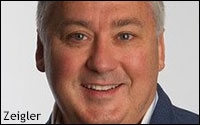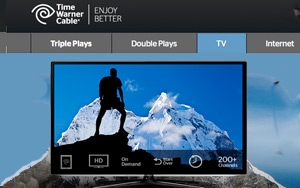May 28, 2015
Just over 50% of the respondents to an informal Inside Radio reader poll say automotive billing is up at their station or cluster this year. 22% say the category is flat, and just over 27% say auto dollars on their stations are actually down. One medium market cluster sales manager says automotive dollars are up significantly at his stations. Auto dollars doubled in Q1 and are up 39% year over year in Q2. And very few of the buys require digital; most are straight spot buys. "Our sales team is making more face to face calls than ever before and in every category we’re using spec spots, research, and sales training tools. They’re making a big differnce in our billing." 294 people responded to the Inside Radio survey yesterday and most say that digital is the difference with local automotive dealers on some buys - but not the majority. Only 3% say the client or agency always includes a request for digital. But 17% say they always include it in their pitch anyway, and it gets attention. Still, 47% say the category is making straight spot buys. Take note: 31% of the survey replies came from makets 100+ where digital is not always the most important factor. One sales manager says it’s ‘the basics’ that are working. "We’re doing a ton of promotions and are very active in the community. In fact, our four-station cluster did over 800 on-site appearances and promotions in the past year."
Time for a midyear sales department tune up. As we head full speed into June and the long summer months, many sales consultants think it might be close to time for a mid-year revenue review. After all, if your station is being on the budget, there are fewer months to play catch-up, and with ‘summer hours’ coming soon, there’s no time like now. Revenue Generation Company System 21 President Michael Guld, author of The Million Dollar Sales Rep, says if your sales team is behind on revenue projections, why not roll out some incentives to sharpen the focus? "I recommend setting a station goal for all long-term "direct" (vs. agency) business written between June 1 and August 31 (minimum 3 month commitments). The dollars do not have to fall within the summer, and in fact should continue through the year. If the goal is made, the bonus incentive is awarded to the staff...divided by the percentage of how much each one contributed to the total dollars billed. The payoff could be a cash bonus pool (set proportional to the billing), station trade or even vacation days off (40, 60 or 80 hours total)." More advice comes from P1 Learning President Speed Marriott, says the month of June marks a good time to make a mid-course correction if you’re not making goals. "June marks the halfway point of the year, so it’s time for a little review. Run a report on year to date orders, accounts, total spots and revenue. Then look for the average order size and average unit rate. Now project those numbers over the back half of the year. Are you on pace to make your total revenue goal? If yes, stay the course, if not you now can create your game plan to get back on track."
Beacons: radio’s new retail opportunity? Beacons are an essential part of the so-called Internet of Things, where devices, systems and services are interconnected and "talk" to each other. But the use of beacons by retailers is just getting started and it could represent a new revenue opportunity for radio. In-store beacons transmit low-frequency Bluetooth signals to a shopper’s smartphone app. They’re able to pinpoint the customer’s precise location, like the pet section for example, and send an offer or coupon localized to that department. Large retailers like Macy’s already use them but only 3% of small businesses utilize beacons, according to Borrell Associates research. CEO Gordon Borrell sees an opportunity for radio to participate in an "impending bonanza" for beacons in retail environments. All it takes is a beacon, which are around three for $99, and integration with an app that customers already use on their smartphone. Borrell says radio and other local media are well-suited to exploit the opportunity because they have relationships with retailers and apps that are often widely used in a local market. As part of their marketing offering for clients, radio stations could create turnkey programs for local retailers and charge in the neighborhood of $2,500-$10,000 a year in promotional fees for the service. Beacons are also being used in some concert venues to manage events and move the crowd. With its live events teams, radio has a beacon opportunity there, too. "You have an installed customer base holding a medium in their hand," Borrell said during a webinar. "All you need is the ability and the right to push a message to them."
Excellence.
High-ranking radio industry execs are taking a hands-on role to
improve the measurement system that radio is bought and sold on. For the first
time in its 10-year history, the Council for Research Excellence (CRE) has
formed a separate committee dedicated exclusively to audio. More than a ratings
watchdog, the CRE was formed in 2005 to help improve media measurement by
conducting and publishing major studies into various aspects of audience
measurement. It identifies specific measurement issues and hires a third party
research firm to study them and provide answers on how Nielsen can improve its
methodology. It has conducted research in advance of Nielsen rolling out a new
product or making a significant change, with the findings applied before the
product launched. Composed of senior-level research pros from media companies,
agencies and advertisers, it’s funded by Nielsen but not beholden to it.
Cumulus Media, Radio One, iHeartMedia, Univision, CBS Radio, the RAB, Katz
Media Group, Magna Global, and of course, Nielsen each have a seat on the
first-ever CRE audio committee. Because it can field third party research
projects, it has more independence and teeth than the Nielsen Audio Advisory
Council, according to Greater Media VP of program development Buzz Knight, who
chairs the committee. “It can frame questions around research and how to
improve methodological issues,” Knight says. “It has the ability to conduct
research that no one company likely could undertake on its own,” CRE
facilitator Richard Zackon says.
Major independent study
planned to improve how Nielsen measures radio. After months of collaboration, top radio research executives next
month are expected to propose a significant study designed to improve how
Nielsen measure radio. The Council for Research Excellence audio committee
plans to submit its proposal to the full Council at its June meeting. The
committee has considered everything from how to enhance small market
measurement to improving sample quality in large markets. “We’ve had a lot of
healthy, open-minded discussion and on a bunch of important topics,” says
Greater Media’s Buzz Knight, who chairs the committee. The full Council will
need to approve the proposal before work can begin and a RFP is drafted. “Once
we have costs, the Council will vote on whether that’s how they want to spend
their money” says Univision EVP of audience measurement, innovation and
analytics Ceril Shagrin, who chairs the full Council. CRE isn’t publicly saying
what the proposal will be, other than it will focus on Nielsen Audio
methodology. Knight says he’s keen on “something that improves measurement
quality across every market: small, medium and large.” The committee is staying
away from the Voltair controversy. “That’s more of a processing issue,” Shagrin
says. “We focus more on methodological research.” Once the research is
completed, it’s made public and presented to Nielsen through what CRE
facilitator Richard Zackon calls an “insights to practice” process. “We say,
here’s what you do, here’s what we’ve learned, how can we apply what we’ve
learned to what you do.” Council doesn’t control what Nielsen does. “But when a
group of its major clients puts forth some grounded concerns that they’ve
researched, they’re able to influence what Nielsen does,” Zackon says.

 Programmatic television has been picking up steam in recent months. Supply-side platforms supporting automated TV selling have been
Programmatic television has been picking up steam in recent months. Supply-side platforms supporting automated TV selling have been 
 Spring is here and that means people are shopping for things. And things include cars. Prognosticators in the auto biz see a fairly blistering month, although down about 1% versus last year, which itself was a remarkable month.
Spring is here and that means people are shopping for things. And things include cars. Prognosticators in the auto biz see a fairly blistering month, although down about 1% versus last year, which itself was a remarkable month. 

 Charter Communications, with big help from Liberty Media, has now moved quickly in buying Time Warner Cable in a proposed $56.7 billion cash and stock deal -- after Comcast Corp.'s recent decision to abandon buying the cable company.
Charter Communications, with big help from Liberty Media, has now moved quickly in buying Time Warner Cable in a proposed $56.7 billion cash and stock deal -- after Comcast Corp.'s recent decision to abandon buying the cable company. 
 If you have not yet watched Sunday night’s “Mad Men” finale, please be forewarned that this blog contains details -- otherwise known as “spoilers” -- about the fates of the show’s principal characters. Also, don’t go on the Internet, check your Twitter feeds or look at your Facebook page, because everyone there will be talking about the show too. For that matter, don’t open any texts or answer your phone. In fact, if you really want to avoid encountering “Mad Men” spoilers today, I suggest you drop what you’re doing and watch the episode right now. Otherwise, good luck avoiding comments and discussions about the show. Having said all that, here’s my recap:
If you have not yet watched Sunday night’s “Mad Men” finale, please be forewarned that this blog contains details -- otherwise known as “spoilers” -- about the fates of the show’s principal characters. Also, don’t go on the Internet, check your Twitter feeds or look at your Facebook page, because everyone there will be talking about the show too. For that matter, don’t open any texts or answer your phone. In fact, if you really want to avoid encountering “Mad Men” spoilers today, I suggest you drop what you’re doing and watch the episode right now. Otherwise, good luck avoiding comments and discussions about the show. Having said all that, here’s my recap: The Tampa-St. Petersburg media market has been healthy in the first half of 2015, with pricing about flat to last year.
The Tampa-St. Petersburg media market has been healthy in the first half of 2015, with pricing about flat to last year.